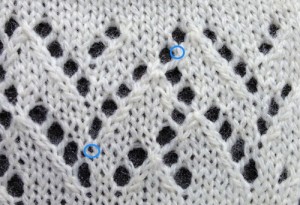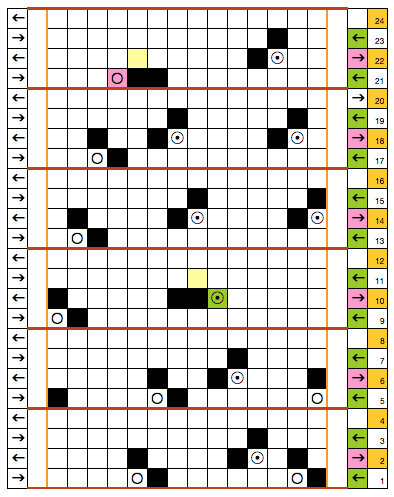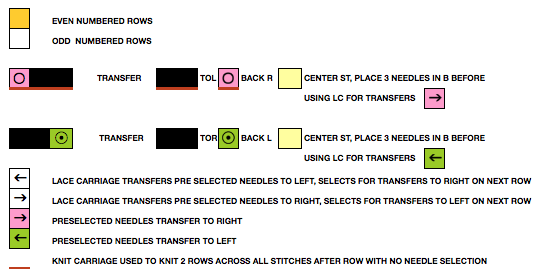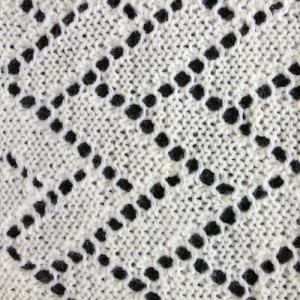This is the original lace working repeat as seen in previous post. It needs to be reduced in repeat width, with segments then moved to accommodate the required changes in height as well
 getting things down to 12 sts repeat width, eliminating sts and rows: easy task with software and virtual “graph paper”
getting things down to 12 sts repeat width, eliminating sts and rows: easy task with software and virtual “graph paper”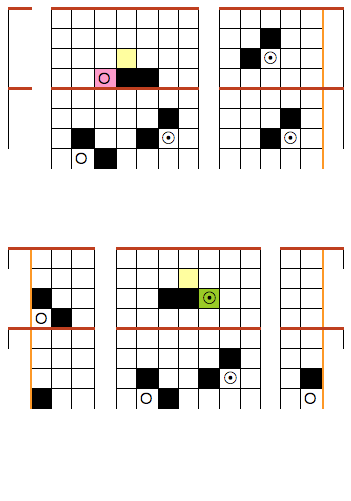 the segments, collaged together; black squares now to become punched holes
the segments, collaged together; black squares now to become punched holes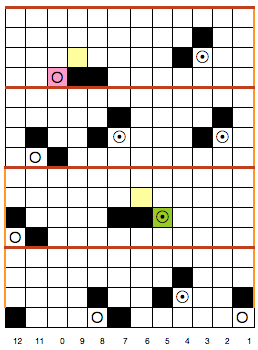 marking out borders to suit mylar or brand of blank punchcard makes placing the markings for transfers accurately easier ie.
marking out borders to suit mylar or brand of blank punchcard makes placing the markings for transfers accurately easier ie.
every 5 squares  every 6 squares
every 6 squares 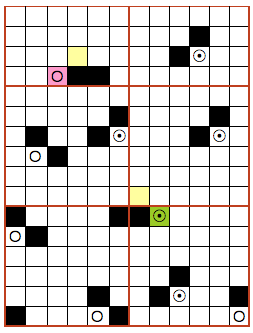
chart with actions of lace carriage included, the 14 stitch by 24 rows electronic repeat now reduced to a 12 stitch by 16 row repeat; see previous post for symbols key a brief test of the resulting fabric: blue circles highlight a couple of the intersecting spots where the punchcard produced lace fabric looks different from the electronic version, because of its shortened and narrowed repeats
a brief test of the resulting fabric: blue circles highlight a couple of the intersecting spots where the punchcard produced lace fabric looks different from the electronic version, because of its shortened and narrowed repeats 